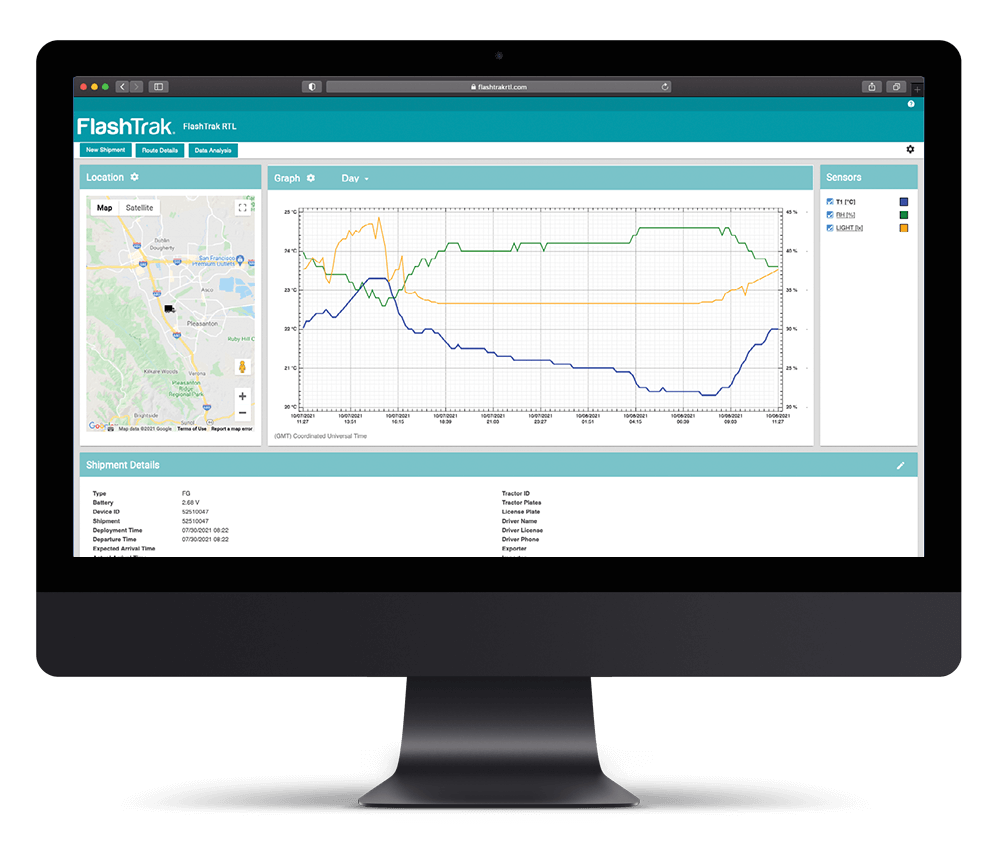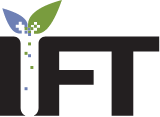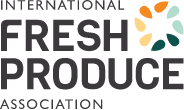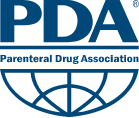


美国政府提高供应链复原力、基础设施安全性以及消费者信息和访问能力的举措:2022 年上半年(附信息图表)

为应对 COVID-19 大流行病、俄乌冲突、天然气价格暴涨和严重供应短缺等综合威胁带来的风险,美国联邦政府正在采取前所未有的措施,以加强供应链的复原力,保护美国家庭。
拜登-哈里斯政府的工作重点是通过鼓励竞争、多样性和新进入者,提高联邦和州政府应对供应短缺的灵活性。
在最近于 6 月 1 日发布的新闻稿”……加强食品供应链和改造食品系统使其更公平、更有竞争力、更有韧性的框架 “中,美国农业部表示,”……[这]已经很清楚,我们不能再回到以前的食品系统了”。
迄今为止,2022 年的政府举措主要集中在三大改进方面:
- 增强复原力,实现供应链多样化
- 加强 基础设施 安全 ,降低自然灾害风险
- 通过更清晰的标签、更好的工具和更广泛的渠道向消费者提供信息
这些举措旨在将供应链恢复到 COVID 前的水平,并与接受资助的社区内创造就业岗位的努力和供应订单挂钩。
有趣的是,6 月份的最新公告是在世界贸易组织部长级会议(MC12)召开前几天发布的,这次会议的重点是满足世界对粮食安全和公共卫生的需求,同时保护创新者的贸易和知识产权。世界贸易组织的《与贸易有关的知识产权协议》(TRIPS)有助于促进解决有关知识产权、技术转让和公共福利的争端。
1.提高复原力,实现供应链多样化
供应链多样化
2022 年 3 月 28 日–美国总统 为商务部制定的 2023 年预算1 包括为国家标准与技术研究院(NIST)的制造业计划拨款 3.72 亿美元,其中包括为制造业扩展合作伙伴关系2增加超过 1.25 亿美元,以帮助美国中小型制造商提高竞争力。这些资金用于支持 2 个新的创新研究所和 1,100 万美元的分析能力建设,以满足新的供应链要求。
2022 年 4 月 18 日–为提高联邦采购的公平性,美国总务管理局 (GSA) 宣布将努力减少弱势小企业 (SDB) 的障碍。拜登-哈里斯政府的目标是到2025年将授予弱势小企业的合同份额提高50%3。
5 月 24 日–美国农业部宣布拨款 7.7 亿美元,为 36 个州和波多黎各的农村社区创造更好的市场机会。大部分资金–-6.4 亿美元–分配给122 个具体项目,从农村商业改善到微型创业努力。美国农业部正在通过 3 个计划进行154 项投资4(赠款和贷款相结合):商业和工业 (B&I) 贷款担保计划、农村经济发展贷款和赠款计划以及农村微型企业援助计划。这些企业包括酒店和餐馆、医院、食品加工设施、移动电话服务提供商、加油站等。
2022 年 6 月 1 日 – 政府提供高达 3.75 亿美元的资金支持独立的肉类和家禽加工厂5。COVID-19 大流行期间面临的瓶颈导致工厂和屠宰的有效产能下降。虽然新进入者有机会参与竞争,但中小型养殖户在竞争加工准入方面却举步维艰。第一阶段包括高达 2500 万美元的 1.5 亿美元赠款,用于扩大产能,包括建设、扩建现有设施和购置设备。
2022 年 6 月 2 日 – 政府宣布投资 6 亿美元并提供财政援助,以支持 肉类和家禽计划未涵盖的食品供应链基础设施6。
- 4 亿美元用于地区食品企业中心
- 3 亿美元用于新的有机食品计划
- 7500 万美元用于支持城市农业
2022 年 6 月 22 日 – 为防止出现严重的供应短缺,国防部在其 2023 年预算中列入了 8000 万美元用于制造业劳动力培训7 ,重点关注微电子、能源存储和电池、铸件和锻件以及导弹和弹药。将在焊接、先进加工、精密光学、计量、数字/附加制造等方面支持工业技能开发。

点击打开信息图表 PDF
2.提高基础设施安全性,降低自然灾害风险
改善道路和水道
4 月 8 日– 公路基础设施计划(HIP)8 拨款 94.5 亿美元,其中 55 亿美元用于桥梁改善9— 更换、修复、保护、防护和建设计划。其中还包括在 2022 年为国家电动汽车基础设施公式计划拨款 10 亿美元。
4 月 21 日 – 美国农业部宣布向 31 个州的132 个流域基础设施项目投资 4.2 亿美元,用于水坝修复、防洪和流域恢复项目10。
6 月 21 日–两党基础设施法向西部 8 个州11拨款 2550 万美元 ,用于资助加利福尼亚州、犹他州、科罗拉多州、俄克拉荷马州、得克萨斯州、华盛顿州和怀俄明州的用水效率和抗旱项目。这笔资金是该法在 2022 年提供的 1.6 亿美元 WaterSMART 补助金的一部分。八个州的地方政府必须在三年内完成项目。
运输安全与公平定价
6 月 16 日– 《2022年海洋改革航运法》12 签署成为法律,增加了联邦海事委员会 (FMC) 监督不公平定价、调查有关远洋承运商收取滞纳金的投诉以及责令退还不合理费用的权力。该法还禁止承运商无理拒绝提供货位,采用不公平或歧视性的方法。海运承载了美国全部进口货物的 53%13,与空运和陆运相比,海运所占份额最大。
减灾
3 月 22 日,美国住房和城市发展部(HUD)拨款30 亿美元用于公平的灾后恢复14。这笔资金将惠及 13 个州服务不足的社区,解决 2021 年 16 场重大灾害的相关问题。
2022 年 3 月 28 日 拜登-哈里斯政府 在 2023 年预算中为 国家海洋和大气协会(NOAA)16增加了 69 亿美元15,以提高其预测与气候变化相关的极端天气的能力。
2022 年 5 月 16 日–美国农业部向受 2020-21 年自然灾害影响的特种作物生产者提供了 60 亿美元的直接紧急救济 17 。这些资金用于解决这两年期间因野火、干旱、飓风、过热、冰冻、冬季风暴等灾害造成的作物损失。
6 月 17 日–《 两党基础设施法》18 拨款 1.03 亿美元,以更好地支持联邦野外消防员。大部分资金(8090 万美元)将用于加快燃料管理工作,通过战略性地清除潜在的野火危险来降低风险。1940 万美元将用于加快烧毁地区的恢复工作。部分资金将用于开发由美国农业部林业局和全国州级林务员协会联合开发的野火风险绘图和减灾工具。一部分资金将用于野外消防员健康和福利计划,包括心理健康、创伤后应激障碍护理,以及应对环境危害以尽量减少工作风险的努力。
食品和药品安全
4 月 27 日–美国国际开发署(USAID)通过采购商品以支持非洲和中东地区的粮食业务,解决了俄罗斯入侵乌克兰造成的粮食不安全问题19,向埃塞俄比亚、肯尼亚、索马里、苏丹、南苏丹和也门等有需要的国家提供了超过 6.7 亿美元的粮食援助,帮助支付海运、内陆运输、内部运输、装运和处理费用。
2022 年 5 月 19 日–美国食品和药物管理局针对汽油、血液、卫生纸和婴儿配方奶粉等重要物资的短缺问题,针对人类药物和生物制品制造商发布了指导报告《缓解药品短缺可能性的风险管理计划》20。
5 月 25 日–美国农业部提供资金和灵活的选择21,帮助妇女、婴儿和儿童 (WIC) 特别补充营养计划的参与者在短缺期间购买婴儿配方奶粉。由于各州机构仅与 3 家制造商签订合同,为 WIC 婴儿提供婴儿配方奶粉,美国农业部鼓励各州允许 WIC 参与者购买其他规格、形式和品牌的奶粉,并在短缺期间支持交换奶粉。美国农业部还鼓励政府与合作伙伴合作,加强供应链的安全性、复原力和多样性。WIC 参与者消费的婴儿配方奶粉约占美国婴儿配方奶粉总量的 56%。
2022 年 6 月 30 日–由于持续的供应链中断和学校食品成本上升,国会批准为 “保持儿童食品供应法案“( Keep Kids Fed Act)追加 9.43 亿美元,由美国农业部商品信贷公司(USDA’s Commodity Credit Corporation)22 提供资金。学校可获得额外的临时资助:每份午餐和早餐分别可获得 0.40 美分和 0.15 美分的额外资助。托儿中心每餐可获得 0.10 美分的额外补偿。
3.用更清晰的标签告知消费者并增加信息获取途径
消费者信息与保护2022 年 1 月 1 日—美国农业部的《 国家生物工程食品披露标准》(NFBFDS)成为强制性标准23。食品生产商、进口商和其他为零售食品贴标签的实体必须 向消费者 明确披露生物工程食品和配料 ,并保留充分的披露记录。生物工程食品是”……通过体外 rDNA 技术改良的食品,而这种改良无法通过常规育种获得或在自然界中发现”。监管实体有几种披露方式可供选择:文字、符号、电子或数字链接和/或短信,小型食品制造商或小型或超小型包装还可选择其他方式。
2022 年 4 月 4 日– 美国农业部的原产国标签(COOL)现已成为日本的要求24 。 该标签告知顾客某些易腐食品的来源和生产方法,包括农场养殖的鱼类和贝类(新鲜和冷冻)、山羊和羔羊、易腐农产品、冷冻水果和蔬菜、花生、山核桃、坚果和夏威夷果、鸡肉、海鲜等。杂货店、超市和仓储式商店利用标志牌、标语牌、带子、麻花绳、别针标签或其他形式来标识原产国和生产方式(如农场饲养、野生)。餐馆、肉店和鱼市则不受此限制。虽然该法于 2017 年 9 月通过,但日本食品制造商要到2022 年 3 月 31 日才必须遵守。
4 月 27 日–美国农业部提供指导,将果汁中铅的行动水平从 50 ppb 降至 10 ppb(单一浓度苹果汁)和 20 ppb(所有其他单一浓度果汁)。据食品及药物管理局估计,这一变化可使儿童从苹果汁中摄入的铅减少 46%(按第 90 个百分位数的摄入水平计算)%25,并使所有其他类型果汁中摄入的铅减少19%(按第 90 个百分位数的摄入水平计算)。
增加获取信息的途径
2022 年 5 月 13 日–拜登-哈里斯政府的 “ 全民互联网 “26 计划将投资 450 亿美元 ,在本十年末为美国的每个人提供负担得起的、可靠的高速互联网。各州现在可通过 “宽带、公平、接入和部署计划”(BEAD)申请资金。联邦通信委员会的 “负担得起的连接计划”(Affordable Connectivity program)和《两党基础设施法》(Bipartisan Infrastructure Law)也为部落社区提供了资金,使其能够以优惠价格获得互联网连接,并获得远程医疗和远程学习等服务。
关于 DeltaTrak:
30 多年来,DeltaTrak 一直为食品、生命科学、制药和化工行业提供温度和环境监控设备。设备用于确保冷藏产品的安全和质量,并检查其他条件(如光线和产品位置)的状态。
例如
- 移动设备用于帮助监控产品运输过程中的温度、湿度、光照和/或冲击影响。(可重复使用和一次性使用的数据记录器)
- FlashTrak 云软件,用于监控产品在运输过程中的状况
给我们发送电子邮件: [email protected]
来源说明:
- 白宫管理和预算办公室(OMB),《美国政府预算,2023 财年》,ISBN 978-0-16-095232-6,https://www.whitehouse.gov/wp-content/uploads/2022/03/budget_fy2023.pdf
- 美国商务部,”拜登总统 2023 财年预算呼吁对关键商务优先事项进行重要投资”,2022 年 3 月 28 日,https://www.commerce.gov/news/press-releases/2022/03/president-bidens-fiscal-year-2023-budget-calls-critical-investments-key
- General Services Administration (GSA),”GSA Announces Actions to Advance Equity and Supplier Diversity in Federal Procurement | GSA”,April18,2022,https://www.gsa.gov/about-us/newsroom/news-releases/gsa-announces-actions-to-advance-equity-and-supplier-diversity-in-federal-procurement-04182022
- 美国农业部,”美国农业部投资 7.7 亿美元为 36 个州和波多黎各的农村企业和人民拓展市场机会”, 2022 年 5 月 24 日,https://www.usda.gov/media/press-releases/2022/05/24/usda-invests-770-million-expand-market-opportunities-rural
- 美国农业部,”USDA Announces Framework for Shoring Up the Food Supply Chain and Transforming the Food System to Be Fairer, More Competitive, More Resilient”, June 1, 2022,https://www.usda.gov/media/press-releases/2022/06/01/usda-announces-framework-shoring-food-supply-chain-and-transforming
- FoodNavigator-usa.com, “USDA investments to ‘transform’ food system could shift power between large, established players and small, mid-sized challengers”, Elizabeth Crawford, June 02, 2022, copyright 2022 – William Reed Ltd.,https://www.foodnavigator-usa.com/Article/2022/06/02/USDA-investments-to-transform-food-system-could-shift-power-between-large-established-players-and-small-mid-sized-challengers
- 美国国防部,2022 年 6 月 22 日。”国防部与孤星州工业界共同解决供应链弹性问题》,https://www.defense.gov/News/News-Stories/Article/Article/3070036/dod-addresses-supply-chain-resiliency-with-lone-star-state-industry/。
- 美国运输部,”两党基础设施法–桥梁投资计划 (BIP) 概况介绍,联邦公路管理局 (dot.gov)”,2022 年 6 月 10 日,https://www.fhwa.dot.gov/bipartisan-infrastructure-law/bip_factsheet.cfm
- 美国运输部,”根据《基础设施投资与就业法》修订的 2022 财政年度(FY)桥梁公式计划 2022 年公路基础设施计划资金分配”,2022 年 4 月 8 日,https://www.fhwa.dot.gov/legsregs/directives/notices/n4510867.cfm
- 美国农业部,《美国农业部宣布投资 4.2 亿美元用于流域基础设施项目,以造福农村和历史上未得到服务的社区》, https://www.usda.gov/media/press-releases/2022/04/21/president-biden-usda-announce-420-million-investment-watershed
- 美国内政部,”拜登总统的两党基础设施法将为西部八个州的水效率项目提供 2550 万美元”,2022 年 6 月 21 日,https://www.doi.gov/pressreleases/president-bidens-bipartisan-infrastructure-law-provide-255-million-water-efficiency
- 2022 年远洋运输改革法》,2022 年 6 月 16 日,https://www.congress.gov/bill/117th-congress/senate-bill/3580/text
- 运输统计局,《海运贸易和运输数字》,2013 年 3 月 7 日,https://www.bts.gov/archive/publications/by_the_numbers/maritime_trade_and_transportation/index
- 住房和城市发展部,《住房和城市发展部宣布投入 30 亿美元推进公平灾后恢复,建设气候复原力》,https://www.hud.gov/press/press_releases_media_advisories/hud_no_22_049, 2022 年 3 月 22 日
- ExecutiveGov, “Proposed FY23 Budget Boosts NOAA’s Climate Change Mitigation Efforts”, March 30, 2022,https://executivegov.com/2022/03/proposed-fy23-budget-boosts-noaas-climate-change-mitigation-efforts/
- 美国商务部,”拜登总统 2023 财年预算呼吁对关键商务优先事项进行关键投资”,2022 年 3 月 22 日,https://www.commerce.gov/news/press-releases/2022/03/president-bidens-fiscal-year-2023-budget-calls-critical-investments-key
- 美国农业部,《美国农业部向受 2020 年和 2021 年自然灾害影响的商品和特种作物生产商提供约 60 亿美元》,2022 年 5 月 16 日,https://www.fsa.usda.gov/news-room/news-releases/2022/usda-to-provide-approximately-6-billion-to-commodity-and-specialty-crop-producers-impacted-by-2020-and-2021-natural-disasters
- 美国内政部,《拜登总统的两党基础设施法将为野火减灾和恢复提供 1.03 亿美元》,2022 年 6 月 17 日,https://www.doi.gov/pressreleases/president-bidens-bipartisan-infrastructure-law-provide-103-million-wildfire-mitigation
- 美国国际开发署,《拜登政府宣布提供数亿美元全球粮食援助以应对普京无端入侵乌克兰》,2022 年 4 月 27 日,https://www.usaid.gov/news-information/press-releases/apr-27-2022-biden-administration-announces-hundreds-millions-dollars-global-food
- 美国食品和药物管理局,指导文件:”减轻药品短缺可能性的风险管理计划》,2022 年 5 月 20 日,https://www.fda.gov/regulatory-information/search-fda-guidance-documents/risk-management-plans-mitigate-potential-drug-shortages
- 美国农业部,”USDA Offers Funding Flexibility to Help States, WIC Families Amid Infant Formula Shortages”(美国农业部提供资金灵活性,帮助各州和 WIC 家庭应对婴儿配方奶粉短缺),2022 年 5 月 25 日,https://www.usda.gov/media/press-releases/2022/05/25/usda-offers-funding-flexibility-help-states-wic-families-amid
- USDA, “Biden Administration Takes Additional Steps to Strengthen Child Nutrition Programs”, June 30, 22,https://www.usda.gov/media/press-releases/2022/06/30/biden-administration-takes-additional-steps-strengthen-child
- 美国农业部,农业营销服务,”国家生物工程食品披露标准”,2019 年 2 月 19 日,https://www.ams.usda.gov/rules-regulations/national-bioengineered-food-disclosure-standard
- 美国农业部对外农业服务局,”日本:主要成分 COOL 要求现已生效”,2022 年 4 月 4 日,https://www.fas.usda.gov/data/japan-cool-main-ingredient-requirements-now-force
- 美国卫生与公众服务部,食品与药物管理局,食品安全与应用营养中心,”果汁中铅的行动水平:行业指南,指南草案”,2022 年 4 月,https://www.fda.gov/media/157949/download
- 美国商务部,《拜登-哈里斯政府启动 450 亿美元的 “全民互联网 “计划,为美国每个人提供 负担得起的、可靠的高速互联网》,2022 年 5 月 13 日,https://www.commerce.gov/news/press-releases/2022/05/biden-harris-administration-launches-45-billion-internet-all-initiative
- (信息图表)《华尔街日报》,”Container Shipping Prices Skyrocket as Rush to Moves Picks Up”,2021 年 7 月 5 日,World Container Index – June 11 | AJOT.COM,https://ajot.com/news/world-container-index-june-11
- (信息图表)Sea-Intelligence, “Schedule Reliability Improves Against March, 2022”, Global Liner Performance Report (GLP), https://www.sea-intelligence.com/press-room/137-schedule-reliability-improves-again-in-march-2022, April 29, 2022
- (信息图表)《纽约时报》,”美国最繁忙的港口”,2021 年 10 月 18 日,https://www.nytimes.com/2021/10/18/us/port-of-los-angeles-supply-chain.html
- (信息图表)ProgressiveFarmer.com,《西海岸码头工人就即将到期的合同展开谈判》,2022 年 6 月 13 日,Mary Kennedy,https://www.dtnpf.com/agriculture/web/ag/columns/cash-market-moves/article/2022/06/13/west-coast-longshore-negotiations。




















